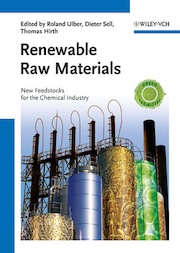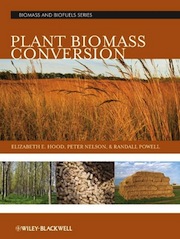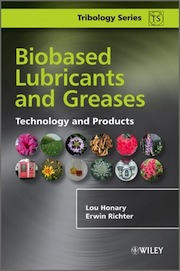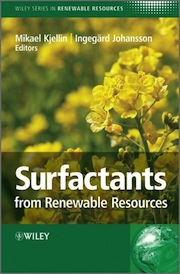Several books for experts and interested communities about renewable raw materials, bio-based products, biotechnology and bioconversion were published in the last months. Here we will give an overview on some of those:
 Roland Ulber, Dieter Sell, Thomas Hirth (ed.; 2011): Renewable Raw Materials. New Feedstocks for the Chemical Industry. Wiley-VCH, Weinheim. 229 pages, ca. 109,- Euro. ISBN 978-3-527-32548-1.
Roland Ulber, Dieter Sell, Thomas Hirth (ed.; 2011): Renewable Raw Materials. New Feedstocks for the Chemical Industry. Wiley-VCH, Weinheim. 229 pages, ca. 109,- Euro. ISBN 978-3-527-32548-1.
In this book three well known German experts of renewable raw materials and bio-based products in the chemical industry edited a book with expert knowledge in all relevant aspects for the bio-based economy. It starts with a section on the production and use of plant-derived molecules such as secondary metabolites, enzymes and pharmaceutical proteins and then leads to the use of biomass for the use in the chemical industry and future biorefioneries. An introduction shows an overview of the world agricultural capacities and the structure of petrochemicals today as well as future prospectives for the chemical industry. In further chapters several experts focussed on logistics of RRM, existing value chains in the industrial biotechnology sector, future biorefineries as well as on the economical, ecological and social implications of the industrial use of renewable raw materials and the market needs and opportunities of bio-based products. As a conclusion of this review this book gives a concentrated overview on all aspects of the use of renewable in the chemical industry for experts and everyone who wants to be informed on today and future options of the bio-based chemistry.
 Elisabeth E. Hood, Peter Nelson, Randall Power (2011): Plant Biomass Conversion. Wiley-VCH, Weinheim. 358 pages, ca. 150,- Euro. ISBN 978-0-8138-1694-4.
Elisabeth E. Hood, Peter Nelson, Randall Power (2011): Plant Biomass Conversion. Wiley-VCH, Weinheim. 358 pages, ca. 150,- Euro. ISBN 978-0-8138-1694-4.
In his book published in the Wiley series “Biomass and Biofuel Series” the authors concentrate on different biomass feedstocks for the conversion to biofuels and bio-based chemicals and polymers. It focusses on several biomass and mainly residual biomass feedstocks for the fermentation industry and on the different fermentation processes. The feedstock part concentrates on several residues from agricultural and forestal systems as well as municipal solid wastes, but also dedicated energy crops such as Miscanthus, sew sorghum and switchgrass are described. The conversion part describes the pretreatment of these feedstock, the several fermentation species for the conversion of C5 and C6 sugars and the status quo and challenges in the enzyme systems for the conversion of lignocellulosic biomass. These chapters are followed by one on several biofuel options and an overview on bio-based chemicals and polymers. A short insight to the carbon offset potential of biomass-based energy and the economics of biofuels complete this book. Overall it gives very good insights on biomass feedstocks for all uses of biomass as well as fermentation technologies mainly for biofuels.
Beside these books on the general use of biomass for energy and material use we would like to introduce our readers to two books on special uses of biomass, mainly plant oils: The Biobased Lubricants and Greases and the Surfactants from Renewable resources:
 Lou A.T. Honary, Erwin Richter (2011): Biobased Lubricants and Greases. Wiley-VCH, Weinheim. 216 pages, ca. 96,- Euro. ISBN 978-0-470-74158-0.
Lou A.T. Honary, Erwin Richter (2011): Biobased Lubricants and Greases. Wiley-VCH, Weinheim. 216 pages, ca. 96,- Euro. ISBN 978-0-470-74158-0.
In their book, Lou A.T. Honary and Erwin Richter, both from the University of Northern Iowa, USA, concentrate on the technology and products in the field of bio-based lubricants and greases. They start with an introduction on the history of vegetable oil-based lubricants and the chemistry of lubricants. Then they show the different options of lubricants from petroleum-based lubricants with focus on the chemistry of paraffinic, naphthenic and aromatic oils, plant oils and synthetic-based lubricants. In their chapter on plant oils they give an overview of conventional oil crops like soybean, palm oil, rapeseed, sunflower, corn and safflower. In a further part they concentrate on option from genetic modified crops and future industrial crops in this field. Based on these insights of the different feedstock options the authors show the technology for the production of bio-based lubricants and the performance properties of industrial lubricants and bio-based and petroleum-based greases. The last pages concentrate on the ecological aspects of bio-based lubricants and greases and the affects on the environment. All in all this book gives a very specific insight on the options and production of bio-based lubricants from a technical and chemical view, unfortunately the economic aspects are not shown.
 Mikael Kjellin, Ingegräd Johansson (Ed..; 2011): Surfactants from Renewable Resources. Wiley-VCH, Weinheim. 320 pages, ca. 109,- Euro. ISBN 978-0-470-76041-3.
Mikael Kjellin, Ingegräd Johansson (Ed..; 2011): Surfactants from Renewable Resources. Wiley-VCH, Weinheim. 320 pages, ca. 109,- Euro. ISBN 978-0-470-76041-3.
The book from Mikael Kjellin and Ingegräd Johansson presents the latest research and applications in surfactants chemistry and technology. It is devided in several parts for different types of renewable surfactants. The chapter on renewable hydrophobes includes surfactants based on natural fatty acids, nitrogen derivates of natural fats and oils and surface-active compounds from wood. The second part on hydrophiles concentrates on surfactants based on carbohydrates and proteins as well as surfactants based on amino acids, lactic acid and ascorbic acid. Other parts are focussed on surfactants based on bio-based ethylene and fermented building blocks, biosurfactants made by enzymatic synthesis from several feedstocks, lecithin and other phospholipids, sophorolipds, rhamnolipids and saponin-based surfactants. The last part shows options of polymeric surfactants from cellulose, lignosulfonates and stabilizers based on inulin. The book is highly concentrated on technical aspects with big expertise in the different production technologies, it aims to be used as a chemical and technical reference for industrial and academic researchers in this field.
Source
Wiley, 2011-08-30.
Supplier
Share
Renewable Carbon News – Daily Newsletter
Subscribe to our daily email newsletter – the world's leading newsletter on renewable materials and chemicals









